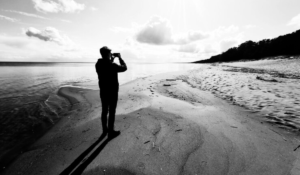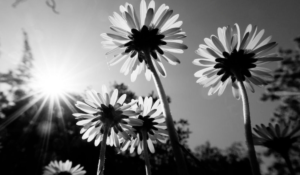Black and White Photography: The Beginner’s Guide

Its unique aesthetics and emotional depth make black-and-white photography a timeless art form in an era saturated with vibrant color images. Through their iconic black-and-white images, renowned practitioners like Sebastiao Salgado and Henri Cartier-Bresson have immortalized historical moments.
Photographing in black and white

The basis of black and white photography is to capture images devoid of color, using tones of gray. A sense of nostalgia and authenticity is evoked by black and white imagery despite the advent of color photography.
Taking a closer look at the advantages

A major advantage of black and white photography is that it allows the viewer to focus on essential elements such as shapes, textures, and compositions. Photographers can refine their skills in areas such as contrast and lighting, while also conveying timeless and dramatic emotions by removing color.
Composition Mastery
Composition is a key element of black-and-white photography, with emphasis placed on contrast, texture, and form. As building blocks of visually compelling images, these elements guide the viewer’s eye and convey narrative depth to the viewer.
Techniques and settings for cameras
An understanding of camera settings and techniques is essential to achieving optimal black-and-white photography results. In monochrome imagery, the nuances of light and shadow can be captured by prioritizing highlights and shooting in RAW format. Real-time previews are possible with black-and-white modes in cameras, which facilitate visualization.
Editing and post-processing

Photographers can manipulate tone, texture, and contrast in post-processing by switching from color to monochrome. With tools like Photoshop and Lightroom, photographers can enhance the visual impact of their images and fine-tune their compositions.
Artistic Expression and Heritage
In addition to being a technical exercise, black-and-white photography is an artistic expression and a journey of exploration. Photographers can explore the rich history of black-and-white photography by engaging with light, composition, and narrative.
Photographic types in black and white

There are no limits to what black-and-white photography can accomplish. From portraits to landscapes, street photography to still life, the possibilities are endless. In each genre, photographers can experiment with lighting, contrast, and composition, expanding their creative repertoire and expressing their creativity.
The difference between monochrome and black and white

In order to understand black-and-white photography, you must distinguish monochrome from black-and-white photography. In contrast to monochrome photography, black and white photography refers specifically to images without color. Clarity in terminology and artistic intent require an understanding of this distinction.
In conclusion
A photographer beginning a journey into black-and-white photography enters a realm of timeless beauty and artistic expression. By understanding composition, camera techniques, and post-processing tools, they can unlock the full potential of this captivating medium and create images that convey depth and emotion.



